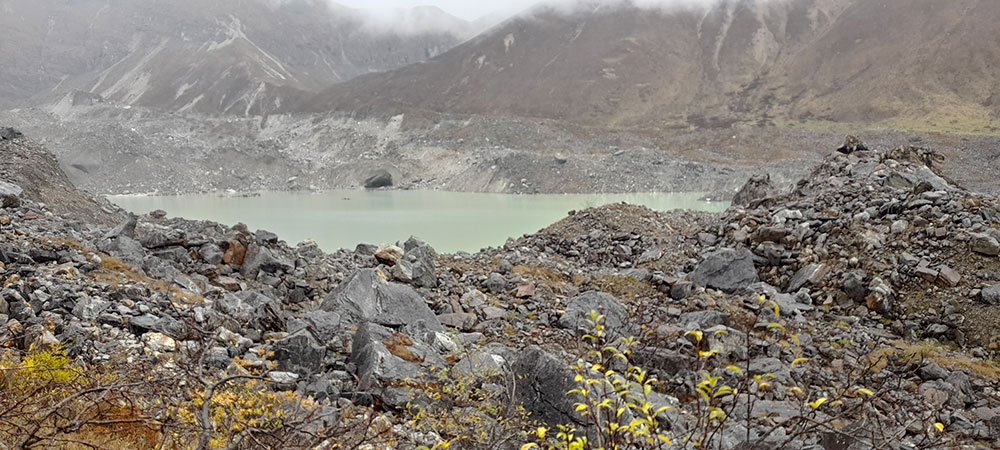Tashi Phuntsho
A team of officials from the tourism, environment, and forest sectors are at Jumolhari, observing and documenting the impact of climate change on communities and their resilience to it.
Calling it an awareness programme on Bhutan’s climate journey, officials will document the changes in vegetation, culture, climate, and overall impact on tourism.
A research ecologist with the Bhutan Ecological Society (BES), Joshua Goldberg (PhD), said the first step towards solving any real problem is to first recognize what the problem is. “This trip to the highlands will make the participants understand the real problems here and provide us with an opportunity to interact with communities in areas already undergoing climate change, and where the impacts of future change are predicted to be severe.”
He said that by gathering observations into a compelling narrative of how climate change is acting in this sensitive area, the study will have the opportunity to catalyse mitigation efforts among national and international stakeholders.
He said that it’s only when the issue has been identified, that meaningful mitigation or resolution efforts can take place.
The research ecologist also said that how the global process of climate change will impact Bhutan, in particular, remains poorly understood. “Most of the global climate models make predictions at a scale that has little meaning for Bhutan’s complex topography and varied microclimates.”
He also explained that there is limited historical data and very little local research to support adapting the techniques used internationally to a local context. “We need to improve our understanding on how Bhutan’s climate has changed up to the present to inform projections of how the climate will change in the coming century.”
According to Joshua Goldberg, once there is a grasp of how climate changes, more targeted, effective climate interventions to support local communities and ecosystems can be developed. “This will require the development of a dynamic, cross-disciplinary research community to study climate change from multiple angles.”
He said that this is not to say that Bhutan should await further study to start climate change mitigation measures. “A variety of measures may realise immediate impacts for individual livelihoods, community well-being, and environmental health, while also building towards a more climate resilient future. We should encourage these kinds of interventions that realise multifaceted benefits.”
The Association of Bhutan Tour Operators (ABTO) board director, Tshewang Rinchen, said the association’s members have seen many changes in landscape, environment, and settlements all over the country, including along the trek routes.
He stated that the Jumolhari trek is one of the most popular treks in the country and there are changes that can be seen that may be attributed to climate change and tourism. “As we make observations of the effects on the communities, we have to marvel at the resilience of people, their natural way of overcoming these effects, and their willingness to help us make observations and find solutions.”
A ranger at Jigme Dorji National Park, Leki, said that it’s always good to have people from different organisations come together for a common goal.
He said through the awareness programme, youth can be sensitised to the impact of climate change and how slight changes in weather patterns or temperature can disrupt the intact ecosystem, which can have devastating implications on the livelihoods of the people.
He said that through basic data collection, they can document some impacts of climate change and at the same time suggest some mitigation measures to the decision makers.
Ranger Leki shared some of his experiences on the impacts of climate change and global warming that are happening in the alpine region, and shifting of vegetation along the altitudinal gradient. “There is more vegetation now on the mountain slopes due to increase in temperature, which is one of the prominent impacts of climate change. It reduces the area of grassland cover that is crucial to yak herders for their livelihood.”
He also noted that low-elevation bird species like the Indian roller and black-capped kingfisher can now be seen in Soe and Lingzhi. “Some migratory birds migrate from lower to higher areas earlier each spring and delay their migration by a week or so when they migrate from their summer habitat to their winter habitat. Some studies suggest that this change in migration pattern could be due to a rise in temperatures.”
An official from the Tourism Council of Bhutan said they are undertaking an assessment or observation on climate change to contribute to Bhutan’s ambition to act decisively on climate change.
Edited by Tashi Dema


